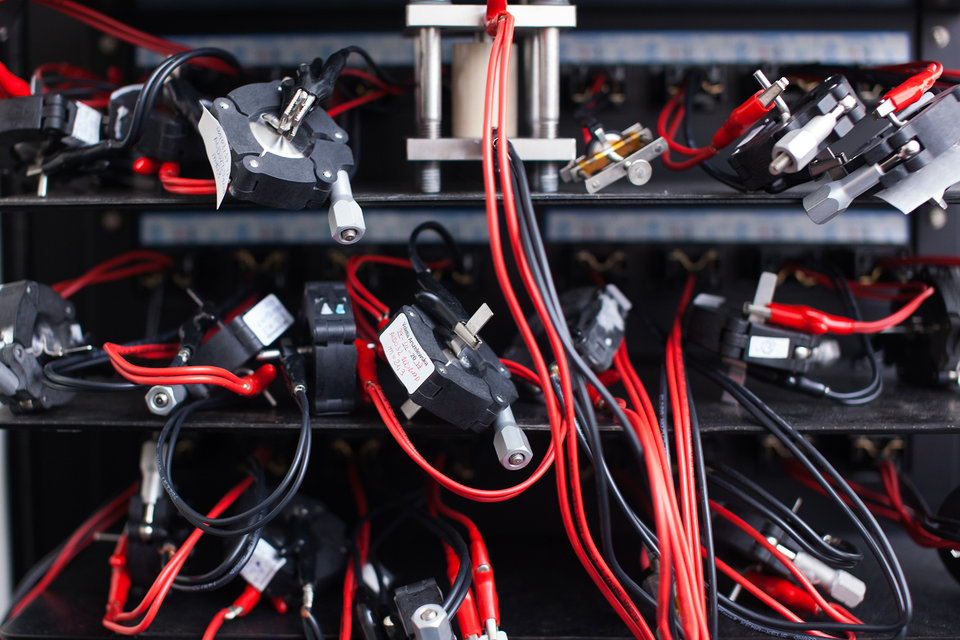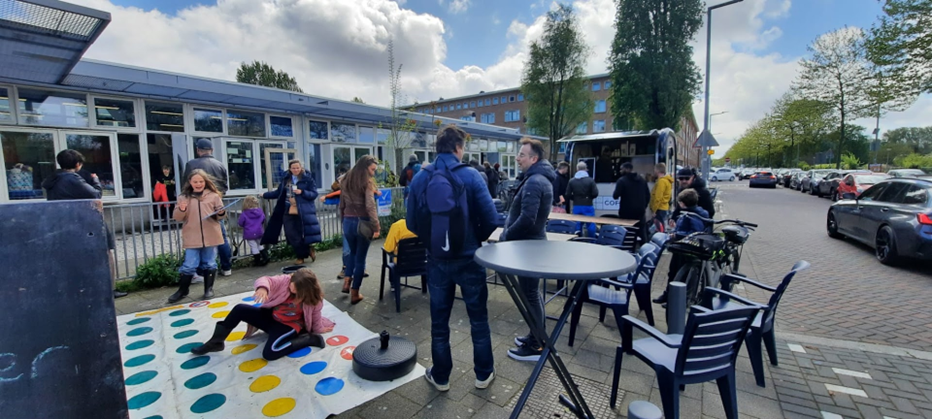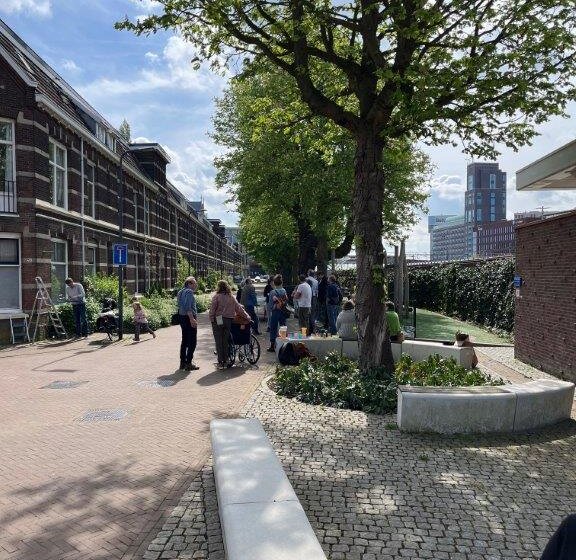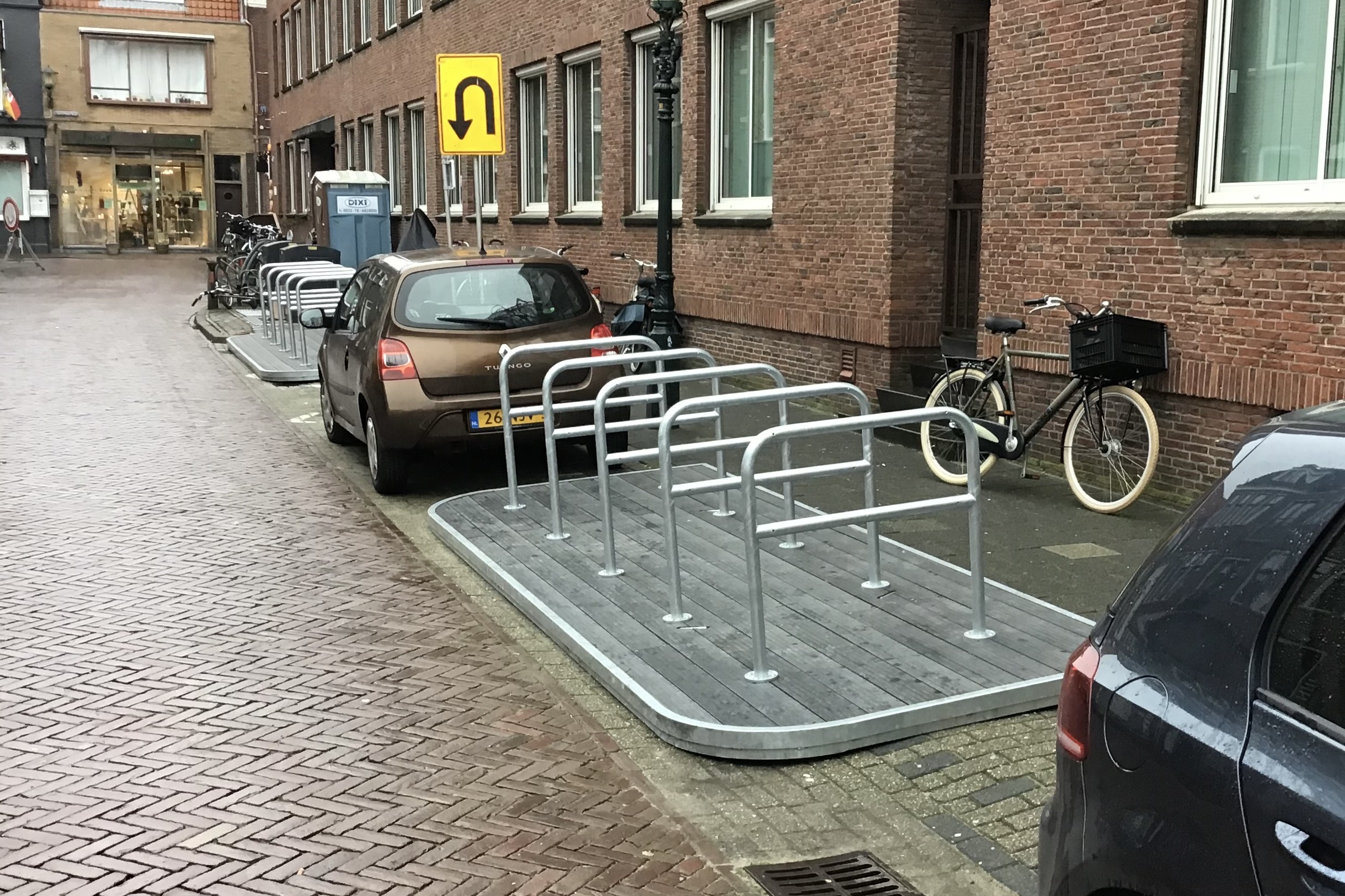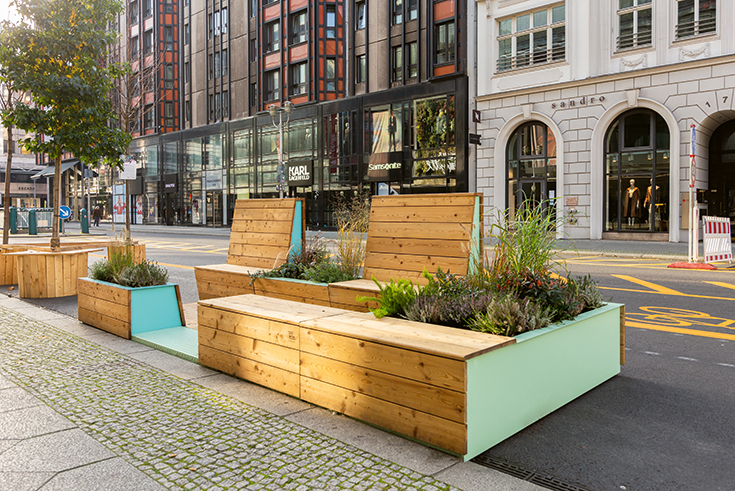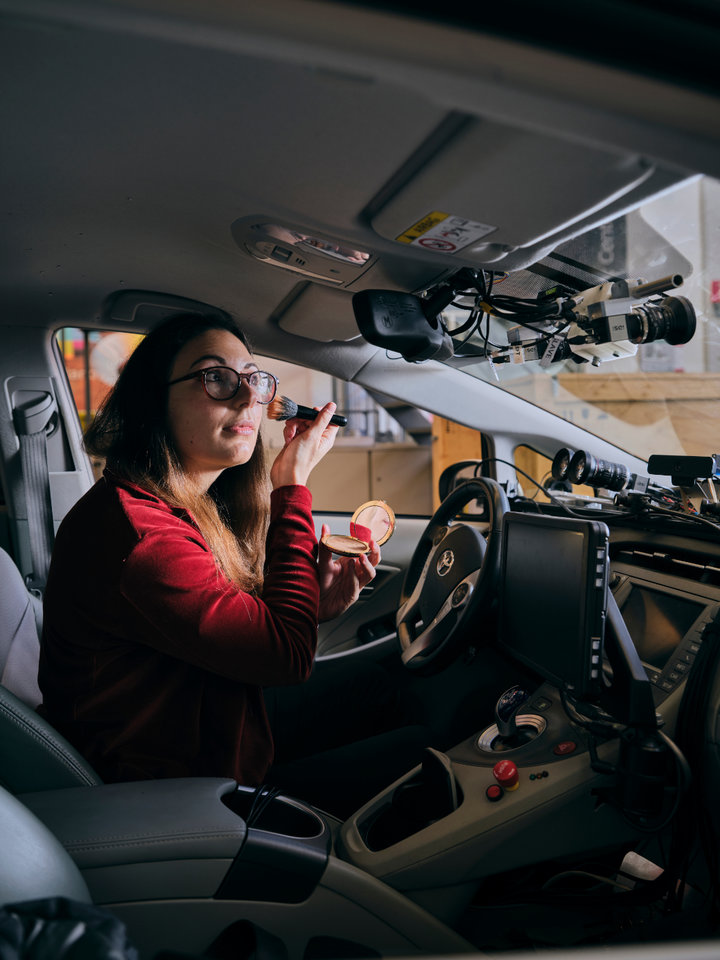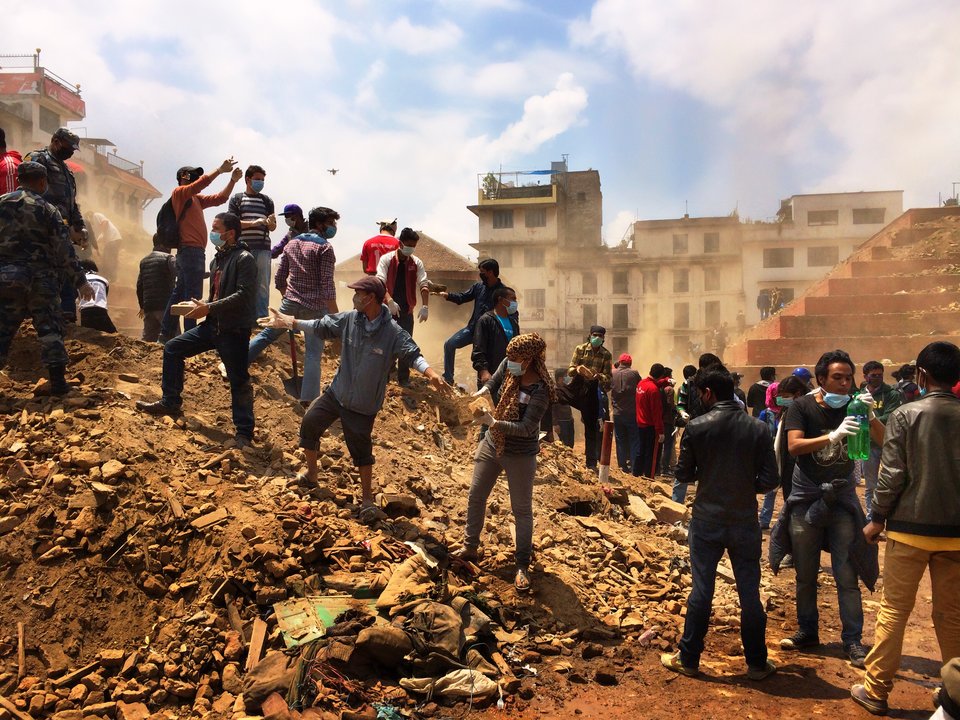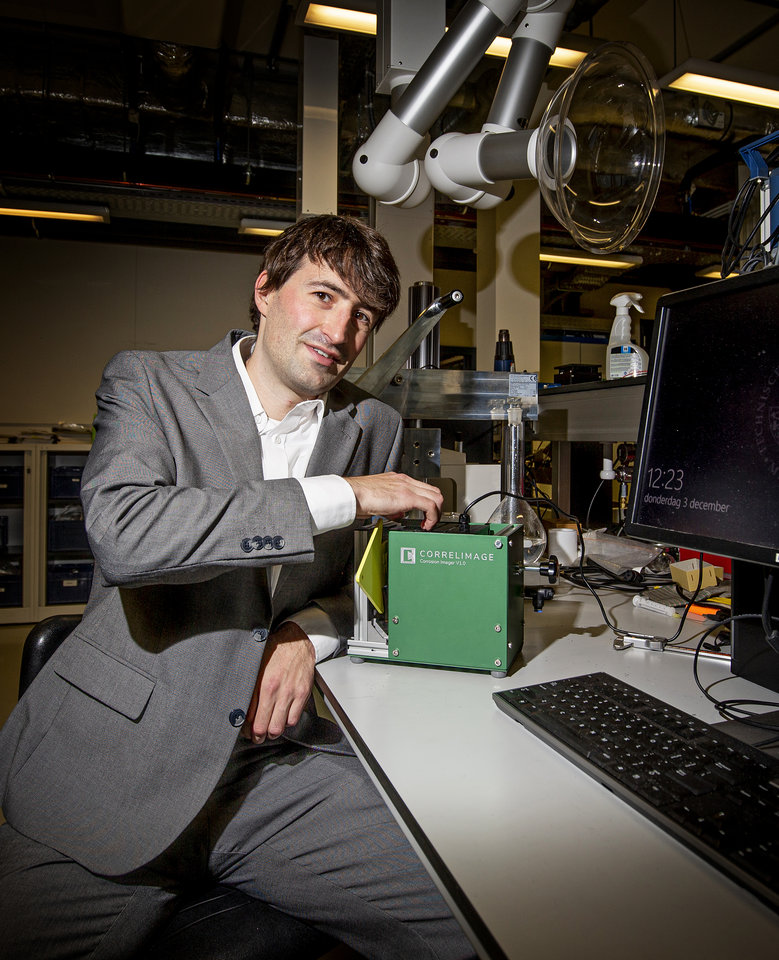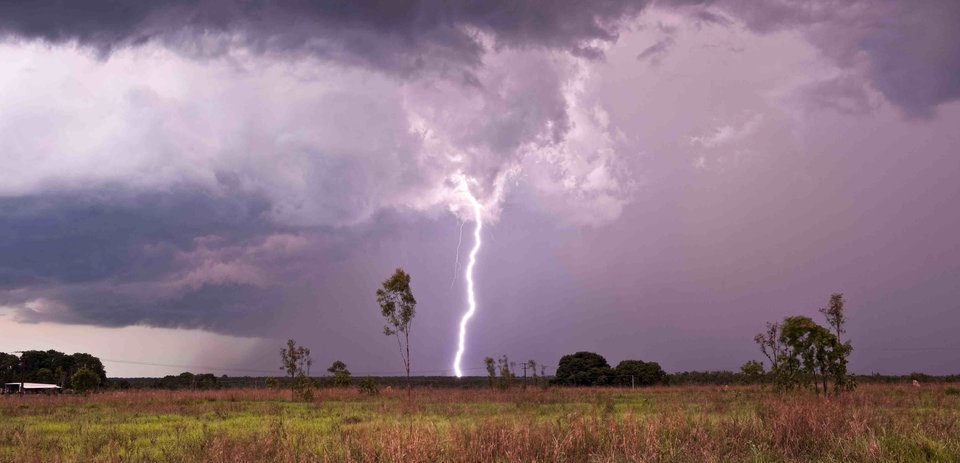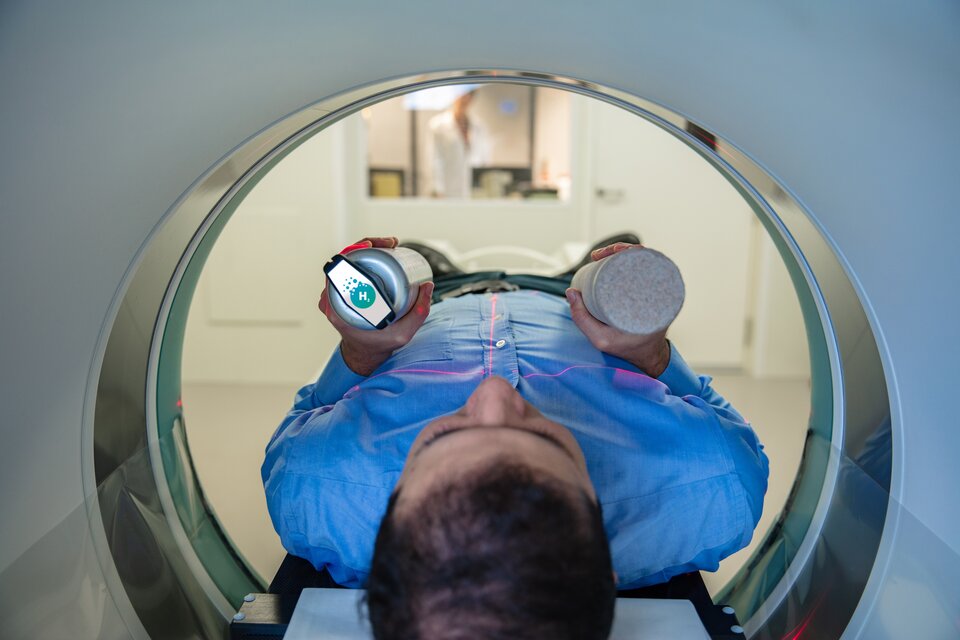Imagine a street where children can play safely, where neighbours meet each other, and where greenery cools the summer heat. This is the vision of the “Fair Street”, a concept that aims for safer, more social, inclusive, and climate-resilient use of our public space. But how do you ensure that everyone is heard and involved in this transformation? Eltjo van Veen, a student of Transport, Infrastructure, and Logistics (TIL), explored how different stakeholders -from parents and residents to municipal authorities -can be engaged in redesigning school environments according to the principles of the Fair Street.
What did you research?
In my project, I analysed how various stakeholders can be involved in implementing the concept of Fair Streets in school environments. The idea behind the Fair Street focuses on making streets safer, more social, inclusive, and climate-resilient, with active user participation in the process. The users are actively engaged in thinking about the use of street space: what is it intended for, and how can it be utilised?
Did you know that cars occupy as much as 50% of public space in cities? In the Netherlands, cars are responsible for many traffic incidents, resulting in 30 injuries and even 2 fatalities daily.
Why are Fair Streets so important?
Due to the lack of space in urban areas, it's becoming increasingly important to critically assess how cities and streets are designed. Did you know that cars occupy as much as 50% of public space in cities? In the Netherlands, cars are responsible for many traffic incidents, resulting in 30 injuries and even 2 fatalities daily. This raises the question whether cars should be allocated so much space in our cities. Is it fair that most people park their cars right outside their homes while that space could be used for other purposes? Streets serve many more functions than just accommodating vehicles. They are the spaces between houses where people meet, children play, and nature can thrive. With the climate becoming increasingly extreme, we urgently need more greenery in our streets. It helps to absorb rain during downpours and provides cooling on hot summer days.
To make the transition to a more liveable street, space for cars will need to be reduced. This often leads to significant resistance from car users. That's why it is important to involve everyone in the design process of a Fair Street. This way, everyone feels heard and informed about the positive effects of a Fair Street.
How is the research conducted?
In my research, I conducted a case study at a primary school in Delft. I interviewed parents, residents, the municipality, and experts and I also distributed surveys. I gained insight into the different needs and perspectives of the stakeholders involved. Additionally, I talked with various types of experts in the fields of traffic and environmental management, ecology, sustainability, and the Dutch Cyclists’ Union.
What did you enjoy most about your research?
The most enjoyable part of my research was the many conversations and interviews with different kinds of people on the topic. These discussions revealed that there is a shared desire for Fair Streets among everyone, though the manner in which this change should be implemented varies. Through my research, I gradually learned more about the diverse needs and preferences of the various stakeholders in the street.
What was the biggest challenge?
My biggest challenge was organising interviews and distributing my survey. Additionally, translating the concepts of the Fair Street into measurable factors was quite difficult because everyone interprets these concepts differently. By having numerous conversations with various people, I gradually gained a clearer understanding. Ultimately, the survey conducted at two different schools clearly highlighted the most common issues faced by primary schools in the Netherlands. For example, the daily traffic and chaos around the school caused by parents who all want to drop off their children right in front of the school by car, combined with the fear among parents of letting their children go to school independently due to the unsafe environment. This, in turn, contributes to the lack of safety around the school, creating a vicious cycle.
What is the most important thing you learned?
That almost no one, especially in school environments, is against the idea of a liveable street. However, to realise this transition, it is crucial to listen carefully to the different interests of the stakeholders and incorporate them into the design. Raising awareness among road users is also essential to help them understand the potential uses of street space. This ultimately leads to greater acceptance when the street environment changes.
What’s next?
More cities and municipalities are realising that travelling fast within the city is no longer the top priority. Due to urbanisation, climate change, and the desire to encourage people to be more active, they are now focusing on creating more liveable cities, where cycling and walking are promoted. This is reflected in measures such as discouraging parking in the city by increasing parking fees and relocating parking spaces from the major metropolitan area. Experiments are also being conducted with placing bicycle racks or terrace platforms in parking spaces. This allows the community to gradually adapt to the new situation and experience the benefits of the additional space. If the experiment is not well-received, these platforms can easily be removed, restoring the parking space.
Study related
Why did you choose the bachelor Systems Engineering, Policy analysis and Management?
I chose Systems Engineering, Policy analysis and Management because of the multidisciplinary nature of the programme. During the open day, I was particularly struck by the comparison to a Swiss Army knife, which perfectly illustrates what this study entails. Just like a Swiss Army knife can be used for a variety of tasks such as cutting, clipping, and sawing, depending on the specific tool needed, this programme provides a broad range of knowledge and skills. Where a specific knife or tool is required for a specific task, this study combines different areas of expertise to address and solve complex problems.
Why did you choose the master Transport, Infrastructure and Logistics?
I chose Transport, Infrastructure, and Logistics (TIL) because of its strong focus on multidisciplinarity, with a special emphasis on transportation and traffic. Additionally, TIL offers the choice and freedom to tailor your own study path, allowing you to select the subjects that interest you the most and best suit your goals.
What knowledge from your bachelor or master do you still use?
In October, I will be working as a traffic manager for infrastructure projects. In this role, I will combine my knowledge of modelling vehicle movements with managing the needs and expectations of stakeholders. This ensures that traffic experiences minimal disruption during infrastructure work.
Sources
Photo 3: Gemeente Amsterdam. (2017). Meerjarenplan fiets 2017-2022. https://openresearch.amsterdam/nl/page/57825/meerjarenplan-fiets-2017-2022
Photo 8: Fietsvlonders.nl. (n.d.). Alkmaar. https://www.fietsvlonder.nl/fotogallery/#iLightbox[gallery_image_1]/6
Photo 9: Detail.de. (n.d.). Modular system for parklets. https://www.detail.de/en/de_en/modular-system-for-parklets-1


